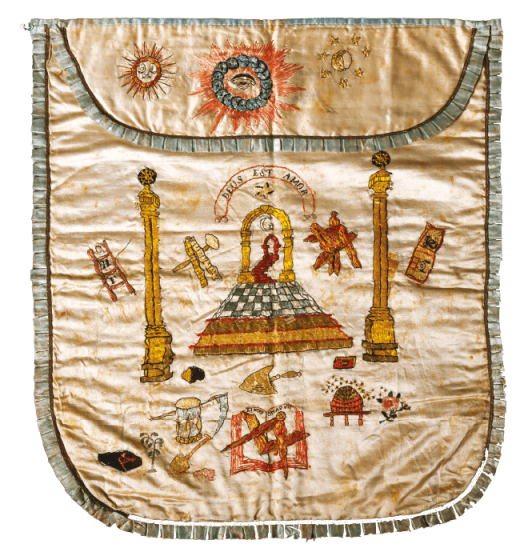
Freemasonry, as the oldest fraternal organization in North America, has a long history of craftsmanship in the fashioning of personal regalia, lodge furnishings, and decorative objects. From the very beginnings of speculative Masonry in the early 18th century, ordinary members of the craft have sought to inspire awe, reverence and fellowship through their handiwork.
Before the age of mass production, the artist who painted a portrait or embellished a piece of furniture might have also decorated a parade banner, an apron, or a backdrop for a fraternal lodge. Carving, sewing, and painting the symbols of the lodge room on to everyday objects became a form of folk art, encoding the ideals of fellowship, labor, charity, and wisdom—the core of fraternal teachings—into the everyday experience of living. Enigmatic, evocative, and familiar, Masonic symbols thus became a rich part of contemporary American popular culture.
Presented here is a small collection of Masonic folk-art objects drawn from the museum collection of the Henry W. Coil Library and Museum of Freemasonry. These objects were created by self-taught artists, men and women who were inspired to share their skills and the enduring messages of the fraternity. Comprised of aprons, quilts, wood carvings, and mysterious boxes, the artwork in this exhibition showcases many hands at work. They also illustrate how the fraternity has been intertwined with the everyday life of its members. When we look closely at these objects we learn as much about life outside the lodge as we do about life inside it.